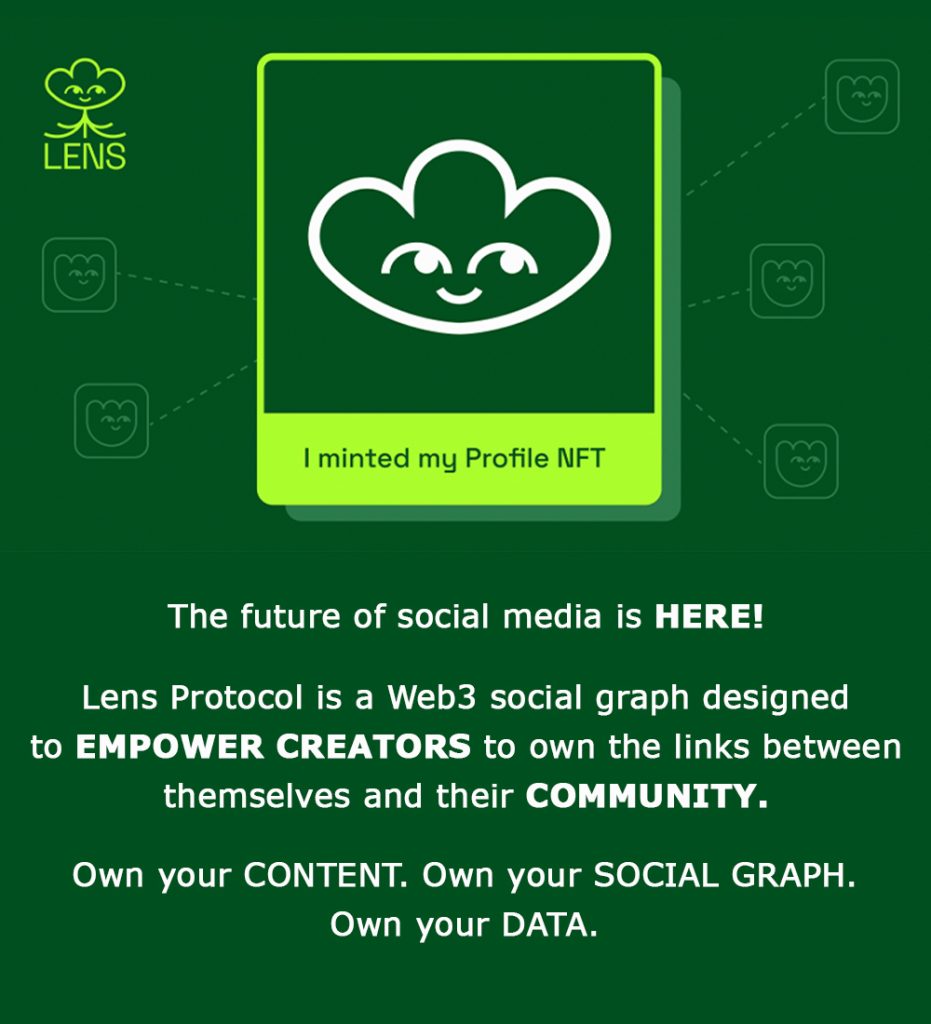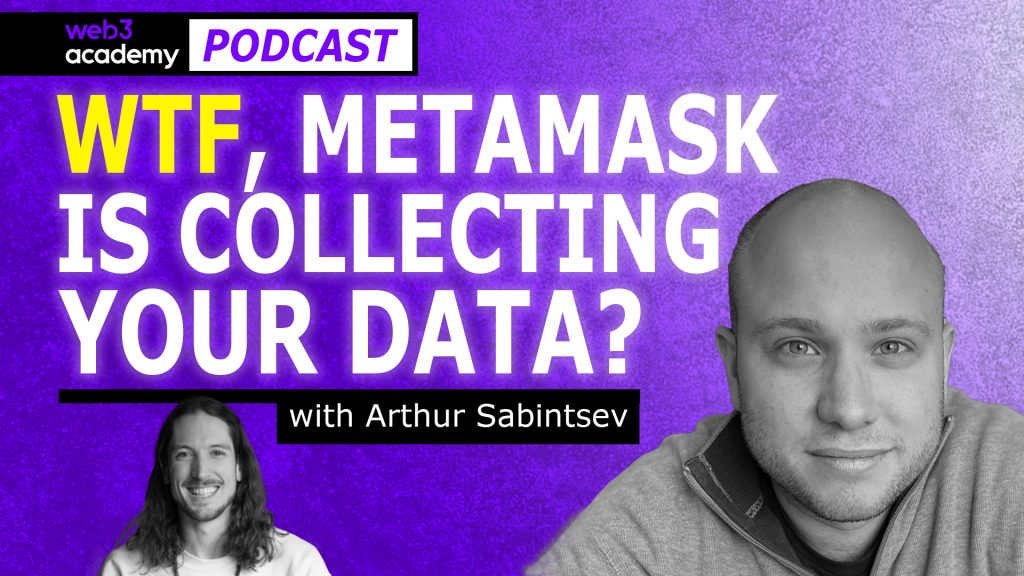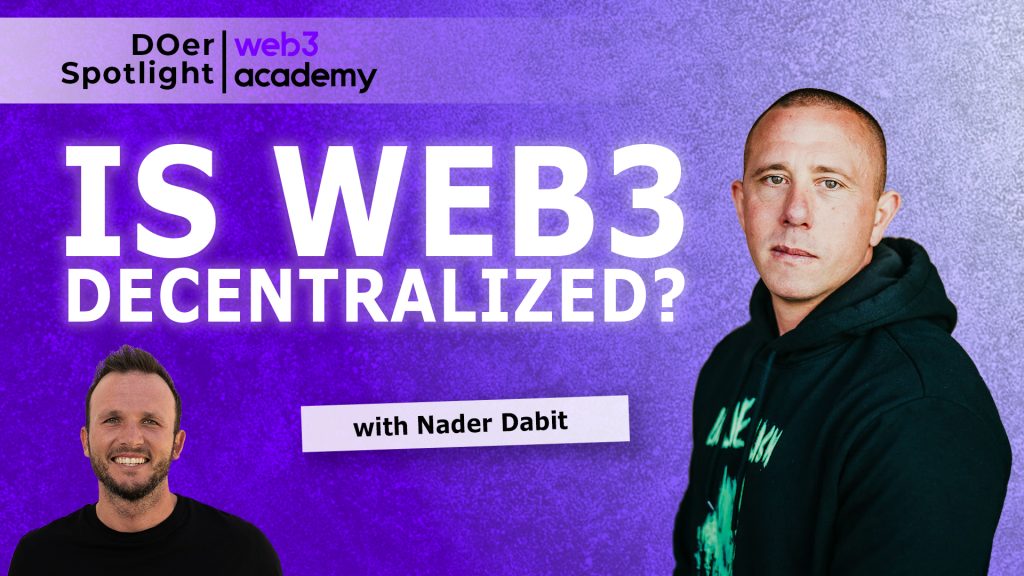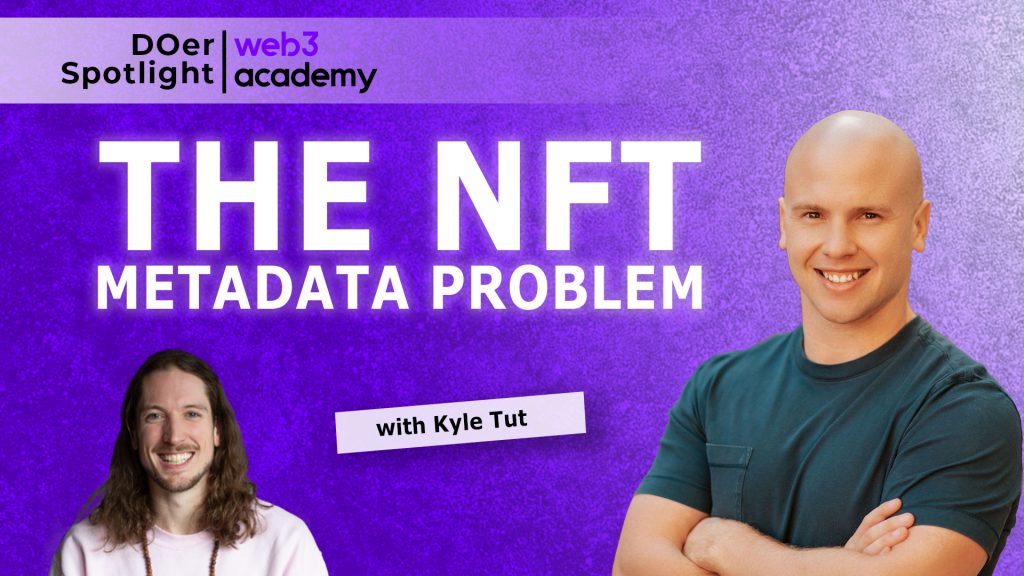
The NFT Metadata Problem Nobody Is Talking About | Kyle Tut @ Pinata
And how we can fix it...
Watch or listen to all of our content on your favorite platform 🎧

THE TL;DR
The NFT Metadata Problem
We sat down with Kyle Tut, the co-founder of Pinata to talk about one of the most overlooked problems in web3… NFT Media Storage (also known as NFT Metadata).
Apparently, it’s really expensive to store files, such as images or videos on the blockchain, so creators of NFT collections are opting for web2 tools like AWS or Dropbox.
This means that the data stored on these software is centralized and can be changed at any time… Does this mean that NFTs are centralized? 😱
Not necessarily… Let us break it down for you!
Btw, if you want to watch or listen to the podcast with Kyle, click on the links above and they’ll take you straight to the episode, on your favorite platform. 🚀
Let’s dive into it. 🔥
We have recently whitelisted thousands of community members for Lens Protocol! 🌿
👉 Check if you’re eligible to claim your Lens handle!
The Struggle with Data on the Internet
The data on the internet is being manipulated every day!
If you’ve been a Web3 Academy follower for a while, we’ll assume that you already know that… We talk about it a lot in our newsletter and on the podcast.
The blunt truth is that the internet is very centralized. Big tech companies like Facebook and Google have established monopolies over our data and they can alter it and exploit it however they see fit!
To better grasp the situation, think of it as the Broken Telephone game. You know, the game where the first person said a sentence to the 2nd person who said whatever they understood to the 3rd person and so on.
By the time it got to the last person, the sentence was completely different than what was said in the first place.
It’s also impossible to determine at which point the sentence was altered with.
That same concept applies on the internet in regards with data. We put our personal information out there and have no idea how it’s being used.
You might expect us to tell you how web3 fixes this but no… Web3 isn’t immune to this issue.
You see, putting data and files on the blockchain is really expensive. Therefore, the web3 space is right now using web2 means to build.
For example, NFT files aren’t on-chain. While the smart contract that represents an NFT is tied to a blockchain, the image of the NFT itself isn’t.
And this is a big issue. More on this in the next section.

SOCIALS
Tweet of the Week

Is File Management the Biggest Issue of NFTs?
Since you cannot effectively put files on the blockchain, file management becomes one of the biggest challenges to be overcome in web3.
Why?
Because if the file (image) representing an NFT isn’t on-chain, it means that the metadata can be changed at any point and we’re back at the telephone game…
This happened recently when CloneX updated the art of one of their NFTs to match Lebron James.
For context, CloneX is owned by RTFKT, who’s owned by Nike, who sponsors Lebron… Through this, the CloneX #7968 NFT (bought by RTFKT for 42.069 ETH 7 months ago) has been updated to match Lebron’s beard & his tattoo.
The problem here is that these changes aren’t transparent. While we can see when the NFT was bought by RTFKT, we cannot see when the changes were made to the metadata and the image.
This means that any NFT creator out there can literally change the art of their NFTs at any time, without anyone’s approval.
So, millions of NFTs aren’t secure and immutable as they should be!
It’s not all bad though… We have a solution – IPFS

SOCIALS
Meme of the Week
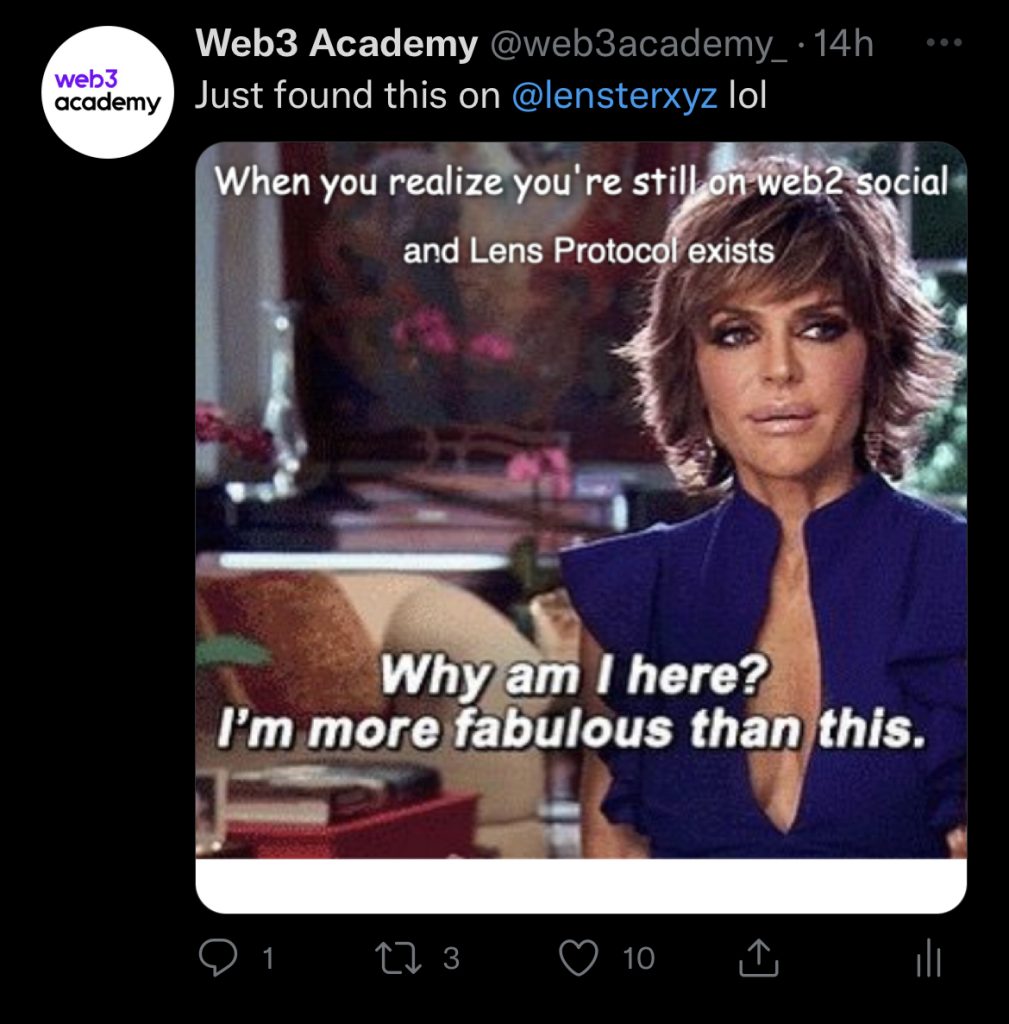
What is IPFS and Which Use Cases Does It Bring to the Table?
On the Web3 Academy Podcast, Kyle Tut suggested that IPFS is perhaps the most suitable solution for solving the NFT file management problem.
IPFS stands for interplanetary file system (coolest abbreviation, right) and it’s a way to store data publicly.
IPFS is a peer-to-peer (P2P) hypermedia distribution system that is designed to provide a permanent, decentralized method for storing and sharing files.
The local files can be added to the IPFS network and made available to the world. IPFS is not a blockchain and it’s not built on a blockchain but rather is designed to work together with existing blockchain protocols.
Practically, the way this works is that an NFT creator makes a smart contract for the NFT and uploads the art to IPFS. From there, it can connect the blockchain to IPFS so that the entire collection is decentralized, immutable and transparent.
Kyle Tut told us that around 60% of NFTs are already using IPFS, which is good to hear. However, there are over 80k collections (numbers from April 2022) on Ethereum alone which means that 32,000 collections are not immutable. This excludes the collections built on Solana, Avalanche, Elrond and the other L1 blockchains.
Most of the metadata of these 32k collections is being stored on AWS. Some of it is even stored on Dropbox… it’s gross 🤮
To be clear, storing your metadata on IPFS doesn’t make your NFTs immutable. It just tracks all the changes, which are made public. This way, even if it gets hacked, anybody can see what has been altered, whereas if AWS gets hacked, the users are completely unaware!
👉 Question: Have you heard about IPFS before reading this article? Reply with Yes or No to this email.

POP QUIZ
What does IPFS stand for?
A. Intellectual Property File System
B. Interplanetary File System
C. International Pledge File System
Find the correct answer at the bottom of this article. 👀
What’s Being Built Right Now in Web3 to Solve the File Management Issue?
As always, here at Web3 Academy, we like to come up with solutions… So, apart from IPFS, we wanted to present you with a couple of protocols built by Kyle’s team over at Pinata that can contribute to solving the file management issues.
The two protocols we wanted to highlight today are Pinata and Submarine.me
What is Pinata and What Does it Solve?
Launched in the midst of the 2018 bear market, Pinata has become the leading media management company for the creators and developers building in web3.
Essentially, Pinata is the middleman between the NFT creator and IPFS. They are helping creators store the metadata of their NFT on IPFS, which is a really cool service considering how many collections are still being stored in web2 ways. We all know that it’s not sustainable long-term.
With IPFS being a little bit more complicated than its web2 competitors, creators can use all the help they can get to make the transition.
What is Submarine.me and What Does it Solve?
We often talk about the theoretical use cases of NFTs such as token gating communities or making exclusive content. While that’s being done already, the truth is that web2 tools like Discord, YouTube or Twitter are still being heavily used to make everything happen.
But not anymore!
Submarine.me is a really cool application that anyone can use. Creators can now easily upload content to IPFS and set a gate for it.
In other words, creators can set specific parameters for their content to be unlocked. These parameters include: holding an NFT, retweeting a certain post, being in a specific location or simply paying for a service with your credit/debit card.
When these requirements are met, the content opens up.
All of these parameters can be set without any code required by all creators that want to gate their content and make it exclusive for certain audience members.
We’re going to attempt to use Submarine.me in the upcoming weeks. Details will follow on Twitter. Keep your eyes open. 👀
Conclusion
It’s scary that we just found out such big news that 40% of NFT metadata is stored in web2 ways and can be changed at any time by the creators without any record…
It shows the fact that web3 infrastructure isn’t yet ready for stuff to be properly built.
But that’s why we’re here… To sit down with DOers in this space and see who’s doing what and which direction web3 is most likely to take.
With each problem, there’s a solution. We just have to look for it!
Thanks for reading, frens! ✌️

SPEED ROUND
A Little About Kyle Tut
For context, this is a speed round that we do with each of our podcast guests. Here are some of the questions and answers featured. 👇
What’s an NFT Kyle would never sell?
Kyle would never sell the only NFT that he made himself, which he says looks like him… Debatable.

What did Kyle recently purchase for under $100 that brings him joy?
A cowboy hat 🤠
If you could say one thing on a billboard, what would it be?

Contact Kyle: Twitter

FOR THE DOERS
Take Action & Level Up
READ
Find out the truth about NFT royalties to get a feel of the issues we encounter with NFTs right now.
FOLLOW
Web3 Academy on TikTok. We’re trying to guide entrepreneurs into web3. Reaching them requires your help so go follow us right now! 🤝
LEARN
Take our FREE Web3 Rabbit Hole Course to get up-to-speed on the foundational components of Web3 so you can confidently build, work, or use the fastest growing technology in history

JOIN WEB3 ACADEMY
Subscribe: Apple Podcast | Spotify | Youtube
Follow: Twitter | TikTok | Instagram | Facebook

POP QUIZ ANSWER
The correct answer is B. Interplanetary File System.

REPLY TO TODAY’S EMAIL
Have you heard about IPFS before reading this article? Reply with Yes or No to this email.




